The final two specimens of Darwin's fossil mammals to have been scanned belonged to an extinct giant ground sloth.
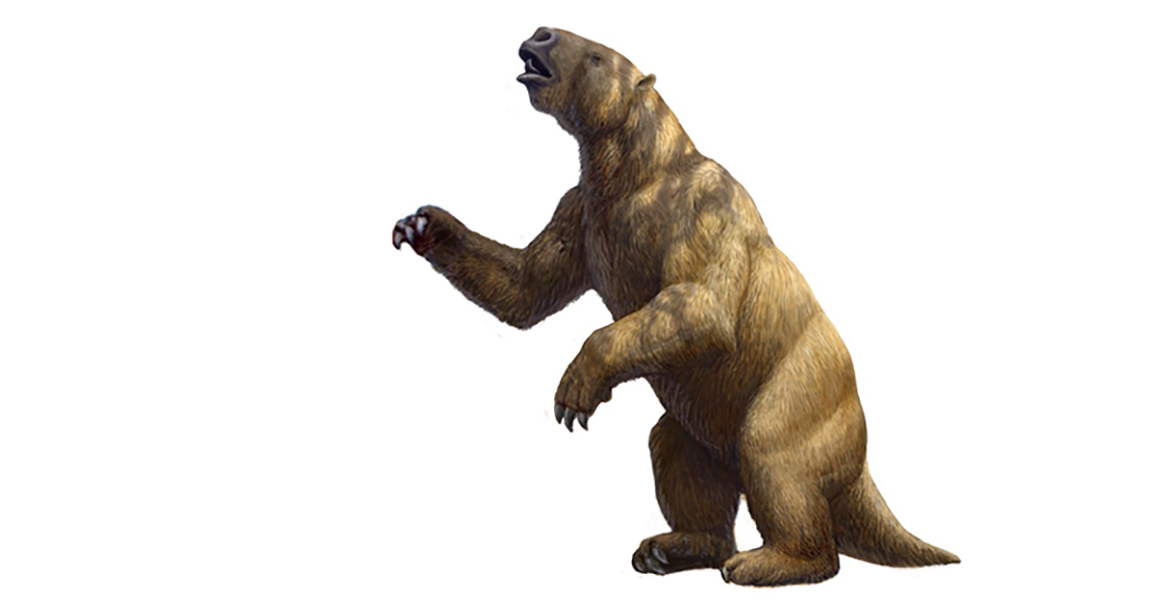
Reconstruction of Megatherium americanum. © Mauricio Anton
In the latest update to the digitisation of Darwin's fossil mammals project, researchers have uploaded the specimens of Megatherium collected by Darwin on the Voyage of the Beagle in the 1830s.
The Megatherium fossils are two halves of the same skull, one held at the Royal College of Surgeons of England Museum and the other at Down House (looked after by English Heritage). The fossils confirmed that, despite weighing up to four tonnes, the extinct animals were indeed related to modern-day sloths.
But what actually was Megatherium?
Megatherium americanum is the scientific name for an extinct species of giant ground sloth. The name means 'great beast from America'.
Discovered in 1787 by Manuel Torres in Argentina, the first M. americanum fossils were shipped to the Museo Nacional de Ciencias in Madrid, where the original skeleton is still on display.
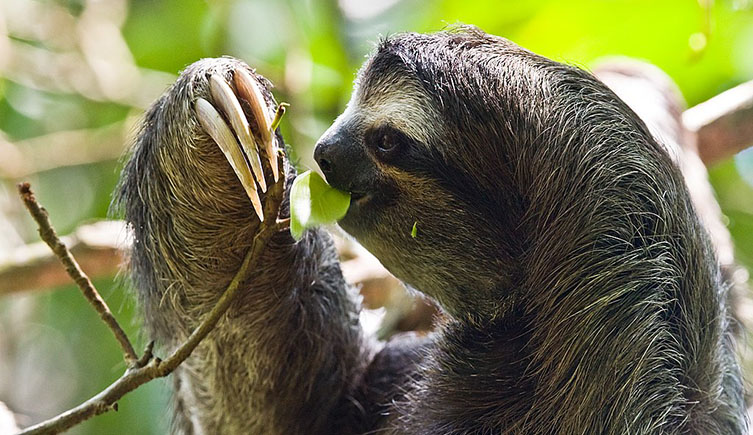
A living three-toed sloth. © Christian Mehlführer/Wikimedia Commons CC BY 2.5
Present day sloths are relatively small mammals. They are less than a in length, average around 5 kg in weight and spend most of their time suspended from branches in trees. They are currently restricted to South and Central America.
Sloths are notable for their low energy levels and slow, deliberate movements (hence their name). They are part of a larger group known as the Xenarthra, which includes their distant relatives the armadillos and anteaters.
In contrast to the , most extinct sloths lived on the ground and some were many times larger than modern tree sloths.
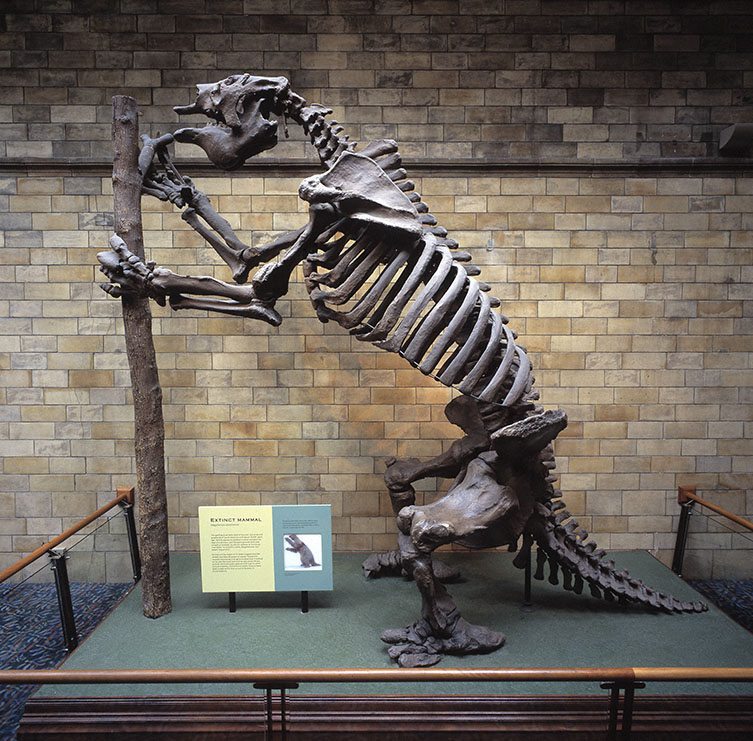
The full Megatherium skeleton cast on display in the Museum on Fossil Way shows just how tall they once stood.
Megatherium was up to 10 times the size of living sloths reaching weights of up to four tonnes (similar to a bull elephant). On its hind legs, M. americanum would have stood a full 3.5 metres (12 feet) tall.
Megatherium americanum is known from Argentina, Uruguay and Bolivia. Fossils of the animals have been found in deposits dating from the Middle Pleistocene (around 400,000 years ago) to the beginning of the Holocene (around 8,000 years ago).
We know that they overlapped with humans in time as Megatherium fossils have been found with cut marks on them, suggesting that these giant sloths were on the menu thousands of years ago.
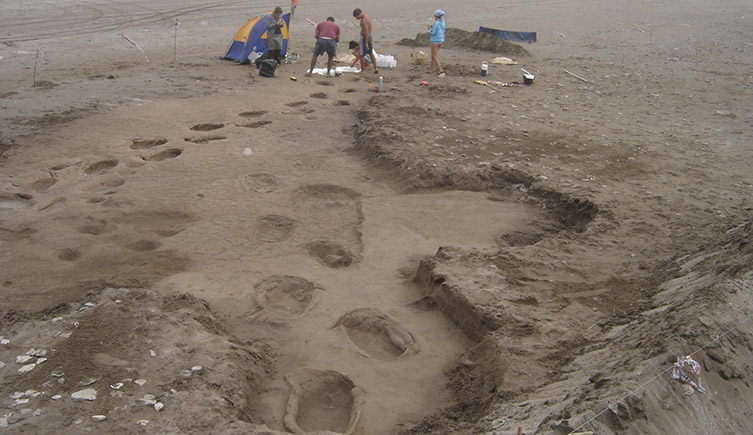
A trackway of eight Megatherium footsteps in the foreground, with another trackway of a small ground sloth in the background. © Dr Teresa Manera
Despite its magnificent claws, M. was a vegetarian. This has been confirmed through chemical analysis of its teeth which record what it ate during life.
It was able to stand and walk on its hind legs, making it the largest bipedal mammal of all time.
Footprints attributed to M. dating to around 14,000 years old have been found in Argentina, just 40 km from a site where the young Charles Darwin collected the remains of this animal between 1832 and 1833.
These specimens collected by Darwin are historically and scientifically important, but also very fragile meaning that physical access to these specimens has had to be restricted to protect the specimens from further damage.
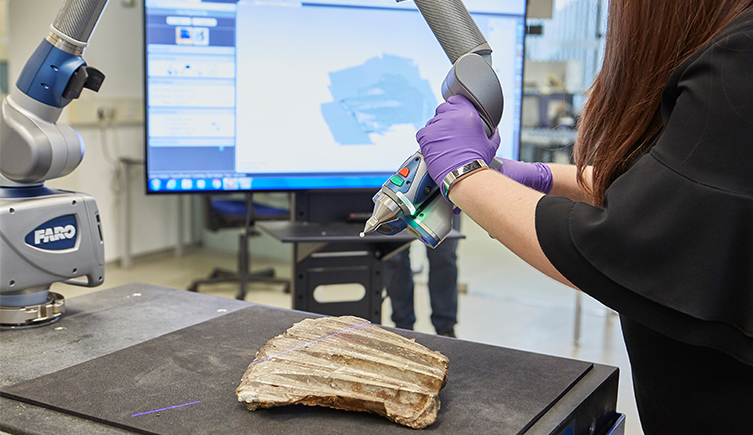
3D surface scanning these specimens helps us to increase access and protect the fossils for future generations.
By creating openly releasing 3D versions of Megatherium specimens' on the Museum’s Data Portal we hope to increase access and use of the specimens online.
The Megatherium fossil scans will join those of the Toxodon specimens - scanned and released earlier this year - in the Darwin Fossil Mammals Dataset on the Museum’s portal. They will also be released on 3D model platform Sketchfab.
Related information
- Follow us on @NHM_Digitse and @NHMFossilMammal to hear more about the Museum's of its 80 million specimens.
- Data from the Megatherium scans are on the Museum's data portal and Sketchfab.
- Find out more about Digitising Darwin's Fossil Mammals.
- Tell us how you would like to use these models by emailing digitalcollections@nhm.ac.uk.
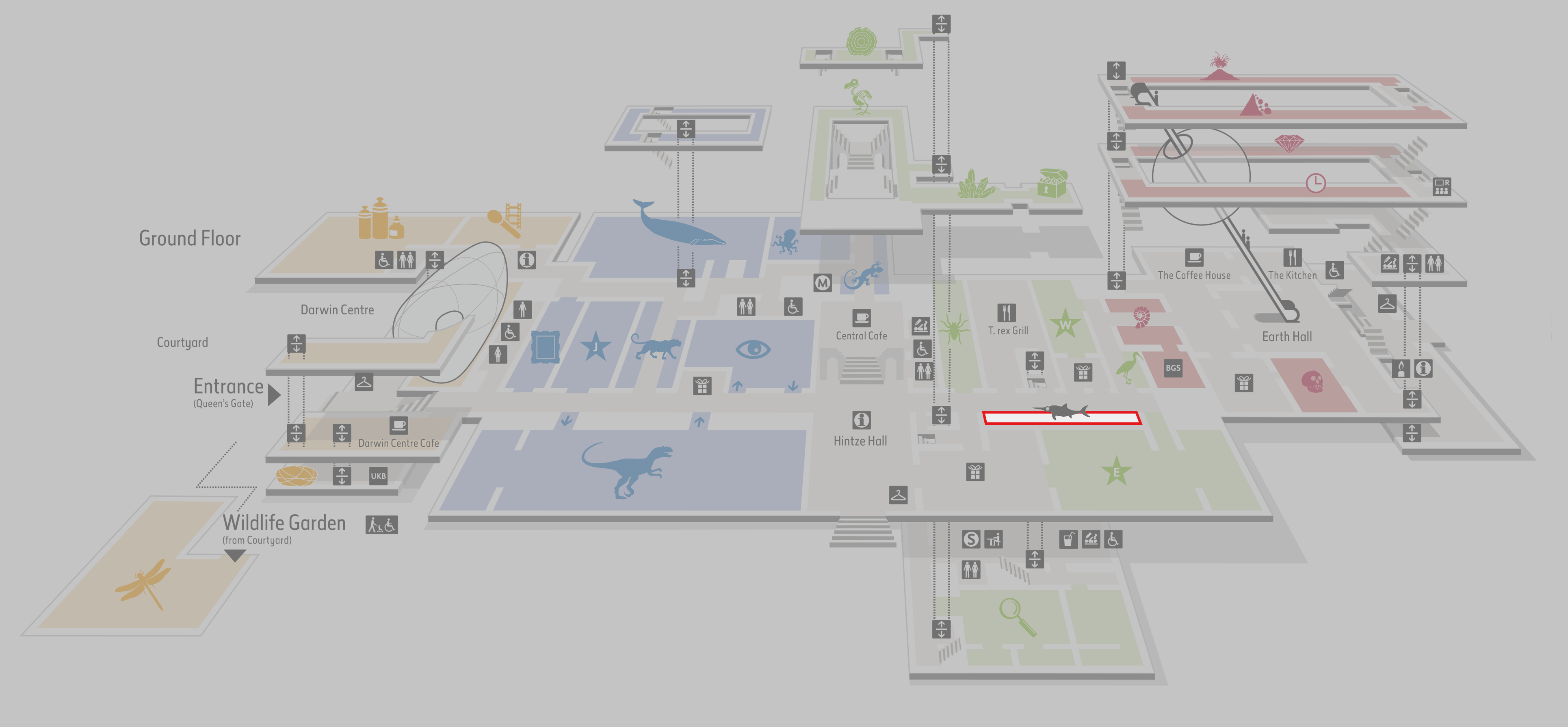
On display at the Museum
It's on display in the Fossil Marine Reptiles gallery.
Explore the collections
From giant fossil mammals to mysterious moths, uncover the colourful stories behind some of the Museum's most fascinating specimens.
How did mammals outlast the dinosaurs?
Explore their evolutionary triumph in our expert-led, online and on-demand course. Discover their journey from survival to dominance!
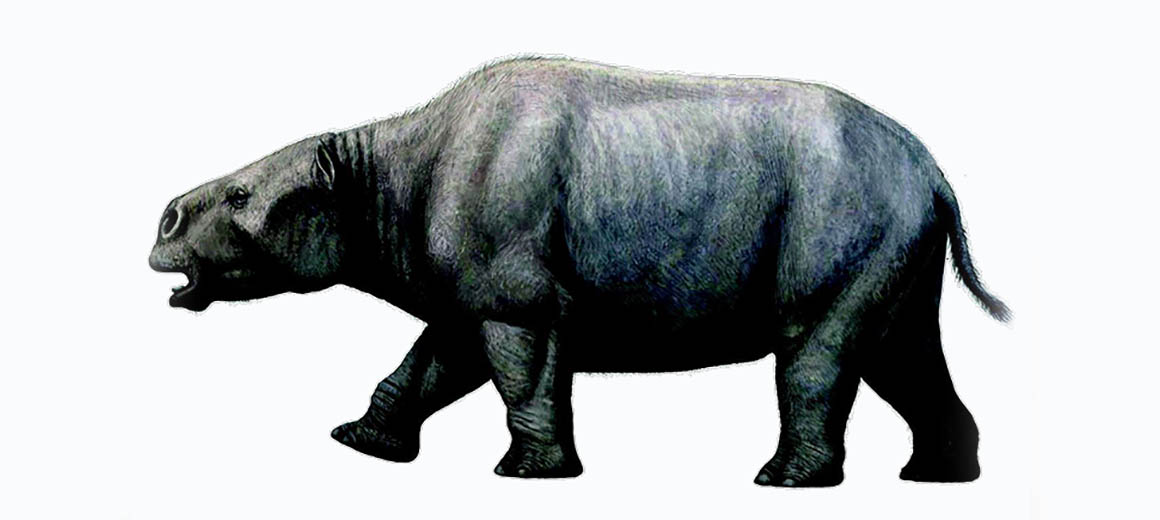
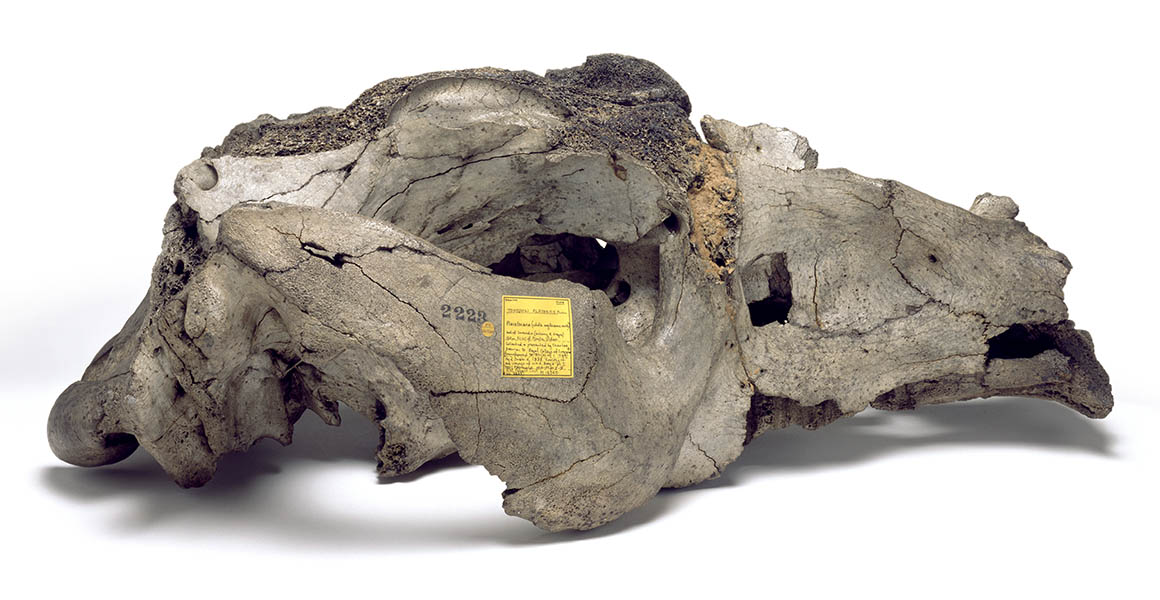
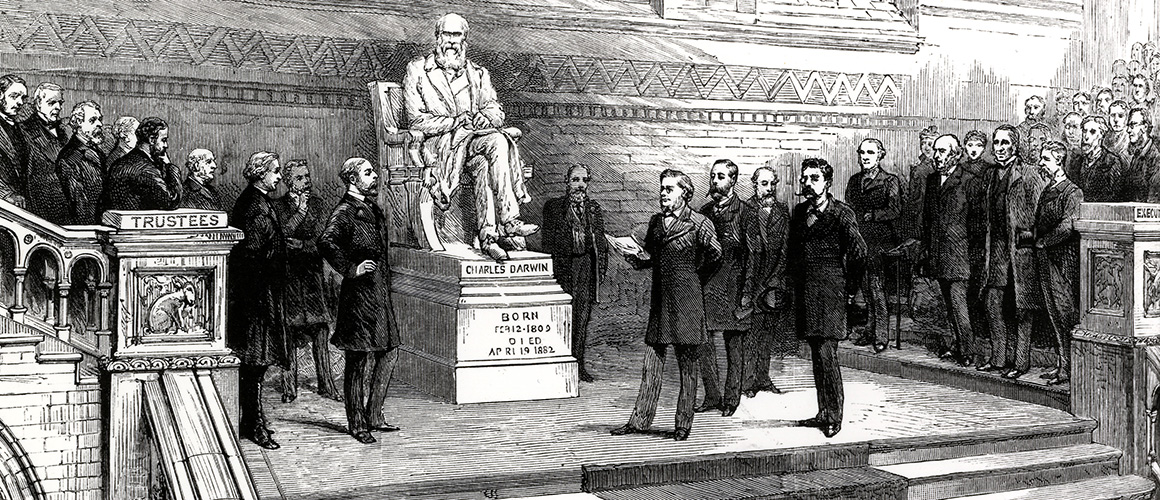
Don't miss a thing
Receive email updates about our news, science, exhibitions, events, products, services and fundraising activities. We may occasionally include third-party content from our corporate partners and other museums. We will not share your personal details with these third parties. You must be over the age of 13. Privacy notice.
Follow us on social media